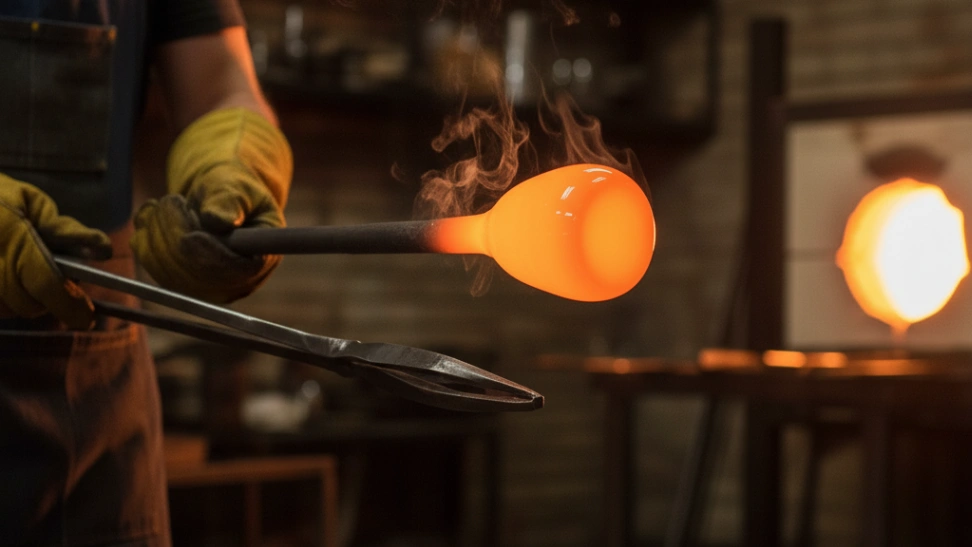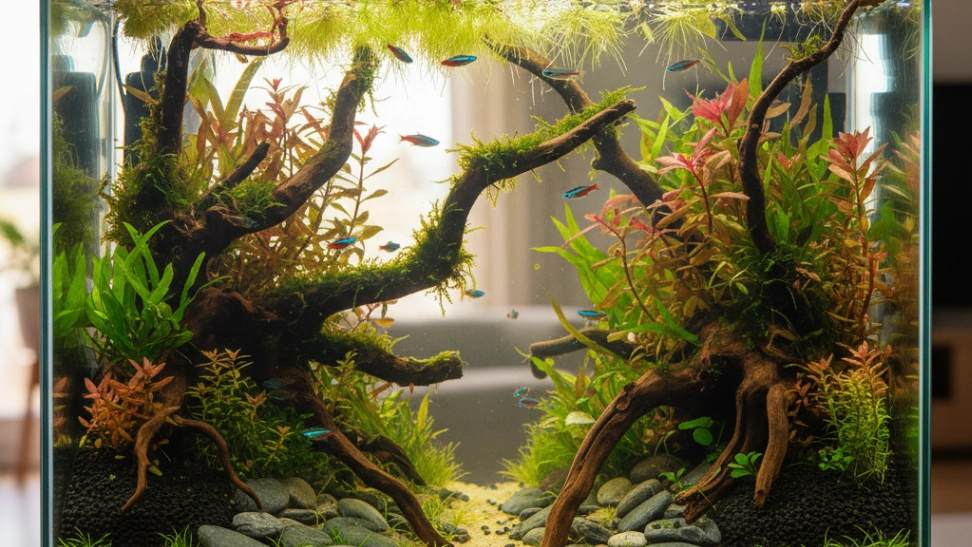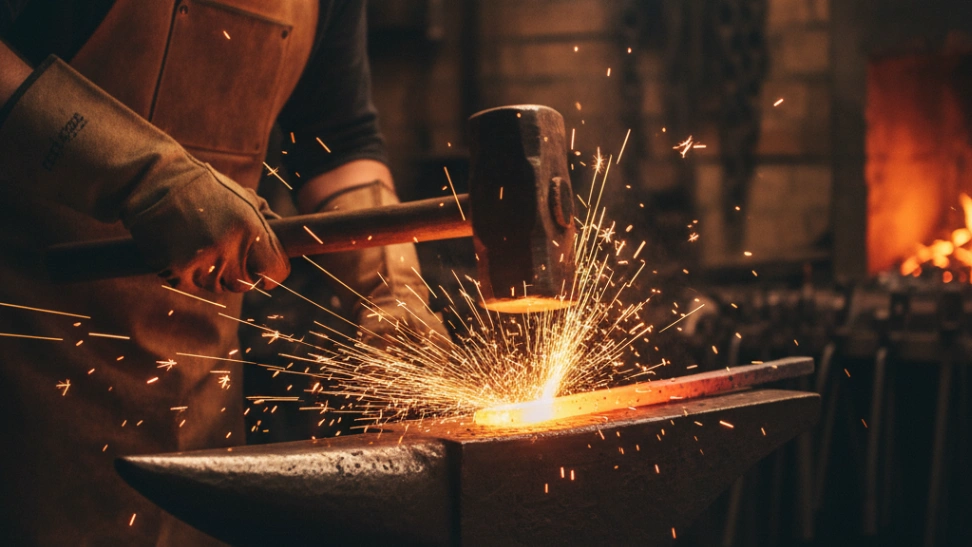The glassblowing process begins at the "glory hole," a reheating furnace where glass is kept molten. An artist dips a hollow steel blowpipe into the furnace to gather a gob of molten glass, which glows orange-red. The pipe is continuously rotated to keep the glass centered and prevent it from dripping. Once a sufficient amount of glass is gathered, the artist begins to inflate it by blowing gently into the pipe, creating an initial bubble. This bubble is then shaped using a variety of hand tools on a "bench." Tools like jacks are used to constrict the glass and define its waist, while wooden blocks and paddles smooth its surface. Gravity and centrifugal force, achieved by rotating and swinging the blowpipe, are crucial in elongating and shaping the glass. Color can be added by rolling the hot glass over crushed colored glass (frit) or by encasing colored rods. The piece is repeatedly reheated in the glory hole to maintain its malleability as it takes shape. Once the desired form is achieved, the piece is transferred from the blowpipe to a solid steel rod called a "pontil" or "punty," allowing the artist to finish the lip or base. Finally, the finished piece must be slowly cooled in an "annealer," a special kiln that gradually reduces the glass's temperature over several hours or even days, preventing thermal shock and cracking by relieving internal stresses. Without proper annealing, the glass would likely shatter. This meticulous control over temperature and timing is as critical as the initial shaping.
The origins of glassblowing can be traced back to the ancient Near East, specifically the region of Mesopotamia, where glassmaking emerged as early as 3500 BC. However, for centuries, glass was primarily molded or cast, producing relatively thick-walled and often opaque objects. The revolutionary technique of glassblowing is believed to have been invented in the Syro-Palestinian region around the middle of the 1st century BC. Roman glassmakers quickly adopted and refined this method, recognizing its efficiency and versatility. The invention of the blowpipe allowed for the mass production of thinner-walled vessels and revolutionized the glass industry, making glass accessible for a wider range of uses, from utilitarian containers to intricate decorative pieces. Roman glassblowers experimented with various forms, colors, and decorative techniques, spreading their expertise throughout the Roman Empire. Following the decline of Rome, glassblowing traditions continued in the Byzantine Empire and later flourished in Islamic lands. The Renaissance saw a resurgence of interest in glass, particularly in Venice, where master glassblowers on the island of Murano developed secret techniques, producing exquisite, highly sought-after glassware that dominated European markets for centuries. Their innovations included intricate latticino, filigree, and millefiori patterns, cementing Murano’s reputation as the epicenter of fine glass art. Throughout the industrial revolution, glassblowing became more mechanized for mass production, but the traditional hand-blown art form persisted, evolving into the vibrant studio glass movement of the 20th century. This movement, emerging in the 1960s, brought glassblowing out of factories and into smaller, independent studios, allowing individual artists to explore glass as a medium for fine art rather than just craft.
Beyond the technical skills, glassblowing offers an unparalleled avenue for creative expression. The fluidity of molten glass encourages organic forms and spontaneous design choices, while also demanding precise planning and execution. Artists can experiment with an endless palette of colors, layering techniques, and sculptural approaches, creating pieces that range from delicate, ethereal vessels to bold, monumental sculptures. The collaborative nature of many glassblowing studios also fosters a strong sense of community. While individual artists often have a singular vision, executing complex pieces frequently requires a team effort, with assistants helping to gather glass, reheat the work, and manage tools. This teamwork builds camaraderie, shared knowledge, and a supportive environment where techniques are exchanged and artistic boundaries are pushed. The studio environment itself is often a lively hub of activity, filled with the hum of furnaces, the rhythmic clanging of tools, and the focused energy of creators working in concert. This blend of individual artistry and collective support makes the glassblowing community a unique and enriching space for creative development and personal growth.
Embarking on the journey of glassblowing is an investment in both time and resources, but the rewards are profound. While the initial learning curve can be steep, marked by inevitable failures and broken pieces, the satisfaction of successfully forming a beautiful object from a raw, glowing material is immense. Safety is paramount in a glassblowing studio, given the extreme temperatures, sharp glass, and heavy equipment. Strict adherence to safety protocols, proper attire, and constant vigilance are essential. Beginners often start with simple forms like paperweights or basic cups, gradually building their skills and confidence before tackling more intricate designs. The physical demands, including working in a hot environment, repetitive movements, and maintaining focus under pressure, require stamina and concentration. However, these challenges contribute to the meditative and immersive quality of the craft. Glassblowing is not just about making objects; it’s about mastering a challenging medium, understanding the delicate balance of scientific principles and artistic vision, and ultimately, creating something beautiful and enduring from fire and air. The transformation from raw material to finished art is a truly magical and deeply satisfying experience for those dedicated to its pursuit.



